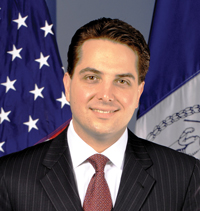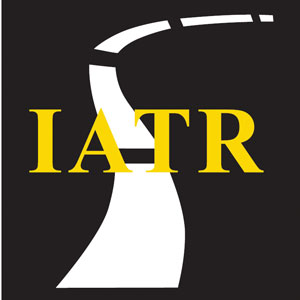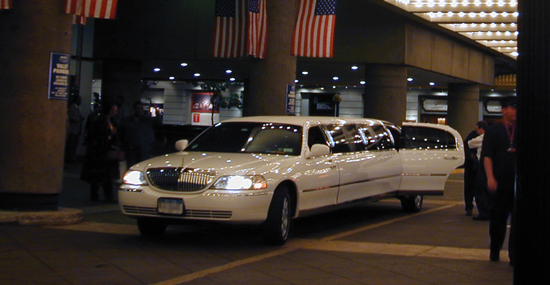 IATR — IN FOCUS
IATR — IN FOCUSPresident, International Association
of Transportation Regulators
Distinguished Lecturer, University Transportation Research Center, Region 2


 IATR — IN FOCUS IATR — IN FOCUS |
||
| by Matthew W. Daus, Esq. President, International Association of Transportation Regulators Distinguished Lecturer, University Transportation Research Center, Region 2 |
 |
 |
This month, I would like to spend a little time talking about an important issue that affects mostly the luxury limousine industry in New York City and around the country.
One of my primary goals at the UTRC, IATR and the Taxi Research Network is to garner more attention and respect from the broader transportation community with respect to the private for-hire vehicle ground transportation mode by integrating research, studies and practical transportation solutions into the mainstream planning undertaken by government, academia and private industry. Well, I did not expect such a prompt response from the Federal government in the form of new safety regulations that now apply to limousines that engage in interstate commerce. When I talked about recognition of our under represented mode this is not exactly what I meant. But it is important for our readers to be aware of these new laws and regulations to ensure compliance and to ascertain whether this is the beginning of a new regulatory trend by the Federal government.
As part of the Safe, Accountable, Flexible, Efficient Transportation Equity Act (SAFETEA) passed by Congress earlier this year, the Federal Motor Carrier Administration (FMCSA), which is part of the United States Department of Transportation (USDOT), removed the exemption that applied to commercial motor vehicles that transport between 9 and 15 passengers in interstate commerce within a 75 air-mile radius. This means that licensing and safety requirements that apply under Federal law to motor carriers now apply to any limousine businesses who conduct any type of pick-up or drop-off within the tri-State region for any distance whatsoever. This applies, as well, to such businesses located in geographic proximity to state borders around the country. These new regulations define interstate commerce, not only as actually crossing the border, but for simply “intending to cross the border” even if it has not happened before.
The new regulations became legally effective on May 3, 2010 and the FMCSA set a compliance date of June 1, 2010. Federal inspectors have already begun conducting site visits and inspections at limousine bases, and have issued citations carrying thousands of dollars in fines. While the notice provided is less than ideal, I am hoping this information will help limousine bases to comply promptly and fully.
The first step to comply is to apply for a USDOT number (for which there is no fee) and obtain an Operating Authority or MC number (which carries a $300 fee). To do so proof of minimum levels of insurance of $1.5 Million (for vehicle seating capacities of less than 15 passengers) or $5 Million (for vehicle seating capacities of 16 or more passengers) must be provided to the FMCSA. Also, in terms of vehicles, the regulations require vehicle markings, specific vehicle parts such as lamps and reflective devices, and annual vehicle inspections.
With respect to drivers, each operator must complete a medical exam and cannot work more than a certain number of consecutive hours. The base must maintain detailed records of the hours worked by each driver, and is subject to compliance reviews and safety ratings. An “unsatisfactory” safety rating not only leads to the inability to operate until non-compliance is corrected, but could be catastrophic to a legitimate limousine business’ operation and reputation with the riding public.
The cost for compliance with SAFETEA is estimated to be over $2000 per motor carrier for the first year, and over $1000 per year thereafter. However, the fines for noncompliance with the aforementioned regulations could range from $1,000 to $ 3,000 per violation which may be increased or decreased due to culpability, history of prior offenses and any additional public policy/safety considerations. Once cited for violations there are legal options available which include:
A failure to respond to a Notice of Claim from the FMCSA within 30 days results in a final judgment for the full fine amount which may be collected by the government’s filing of a civil action in Federal District Court, Internal Revenue Service offsets against tax refunds, and being suspended and prohibited from operating in interstate commerce until the fines are paid.
I encourage all limousine or other licensed businesses that have one or more vehicles seating between 9 and 15 passengers (including the driver) affiliated with their bases to immediately comply regardless of whether you have or plan to conduct even one interstate trip. You never know when a business opportunity may come along to travel outside the state you are located in, even if it is a considerable distance, or whether an undercover DOT inspector will call your business for such service. So why take the chance of violating these regulations? The costs and risks of non-compliance greatly outweigh the costs of compliance, in my view, especially in most jurisdictions that already regulate limousines extensively.
For example, in New Jersey, State laws require $1.5 Million in liability insurance for limousines defined as vehicles with no more than 14 passengers excluding the driver. In New York City the Taxi and Limousine Commission also already requires insurance of $1.5 Million for limousines with up to 15 passengers, and $5 Million for limousines with more than 15 passengers, and many already voluntary maintain driver records and data. The only additional requirements to comply would be filing fees, paperwork and medical exams for the drivers which the TLC does not require for limousines although it does for taxicab drivers.
I hope this information is helpful to the industry. If anyone has any comments, questions or experiences to share, I can be reached at mwdaus@juno.com.
